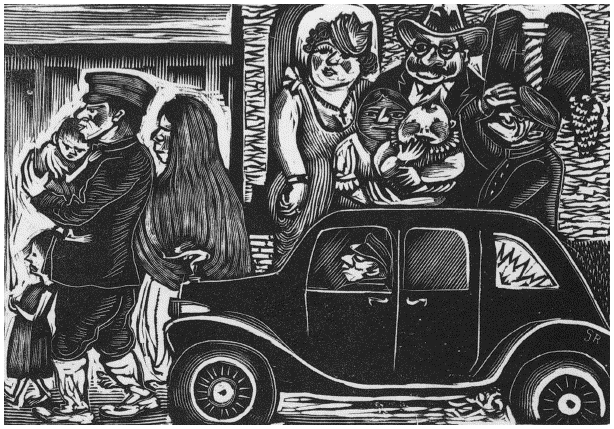
A People's History of
Poverty in America
Stephan Pimpare
(The New Press)

Facts and quotes like this abound in A People's History of Poverty in America. The author calls it a "bottom up" history, a document of the "heroic effort of mere survival." Among "advanced" nations, the United States is first in general poverty, childhood poverty, elderly poverty, CEO pay, health-care costs, income inequality and incarceration. "Men in Bangladesh stand a better chance of surviving to age sixty-five than black men in Harlem," the author reports. The American poor worry about their stomachs, but politicians and those with power and the religious folk worry more about what they are doing in their bedrooms, not how well they (or their families) are doing.
- "Payday loan brokers" are taking over as 'the emergency resource of choice' for the poor. Five years ago there were 16,000 of these in the United States, and they have grown exponentially since. The "annualized rates of interest" amount to "350 to 1,000 percent."
Those who use check cashiers instead of bank accounts are charged as much as 3.5 percent for each check they cash, and pay $1.50 (and more) per money order; they are more likely to be younger, less educated, poorer, black and Hispanic.
- Funds for the poor serve as a check on the morals of the lower class. "American relief has functioned to regulate the sexual, reproductive, and labor market behavior of vulnerable populations," and several critics have stated that "the principal function of relief is to regulate the low-wage labor supply and to placate disruptive poor and unemployed people."
- To be poor was a crime. In colonial times in America, poverty could land you in jail. "Even to be accused of poverty means the denial of your most basic liberty, and to be driven deeper into need by your punishment." In 19th Century New York, most who were imprisoned for non-payment of debts
were incarcerated for small sums; some were prostitutes who owed money to their brothels; others were sailors guilty of nothing, accused by their captains and incarcerated only to ensure that when he next needed them to set sail they would be available.
- The homeless, those who spend their nights in shelters, usually end up in public libraries, "because they want to sit down and recover from the chilly dawn or use the restrooms. Fast-food restaurants, hotel lobbies, office foyers, shopping malls, and other privately owned businesses and properties do not tolerate their presence for long." Ask any urban library administrator, and
he or she will tell you about the struggles of America's public librarians to cope with their unwanted and unappreciated role as the daytime guardians of the down and out. In our public libraries, the outcasts are inside.
- Slavery was considered by some to be a form of welfare. A certain George Fitzhugh argued that slavery "was welfare program enough ... and it worked so well for 'Negroes' that it could and should solve the subsistence problems of poor whites as well."
- According to the Brookings Institution, "poorer households paid higher interest rates on mortgages and car loans than did others, and paid more for cars, insurance, groceries, furniture, and appliances." The author suggests,
Perhaps we should think of this as a poverty tax.
- Before the Civil War, prostitution was a "greater portion of the New York economy than shipbuilding, furnace making, hatmaking, boot and shoemaking, butcher shops, bakeries, printing, or breweries. As many as 10 percent of all women under thirty years old in turn-of-the-century New York prostituted at some point, historian Timothy Gilfoyle estimates:"
Like peddling, scavaging, and ragpicking, prostitution turned something with little value into something with cash value. When work was slow or money slack, milliners, servants and peddlers alike resorted to prostitution,
The thesis on which this book is built is simple. When the poverty-stricken in this country need to feed themselves and their children, they are faced with two dismal choices --- get help from a system that treats them like trash ... or go to work with wages so low that they will be even poorer on payday.
"By current, official measures, more than one-third of poor Americans are children under eighteen years old, more than 10 percent are over age sixty-five, and nearly 40 percent of the adult poor are disabled,"
that is, most poor people are "deserving" or "involuntarily" poor due to old age, youth, or infirmity.
The image of most is the "welfare queen" or "Welfare Cadillac." President Nixon asked Johnny Cash to sing this song at the White House, but, instead, Cash performed "The Man in Black:"
And why does my appearance seem to have a somber tone
Well, there's a reason for the things I have on
I wear the black for the poor and the beaten down
Livin' in the hopeless, hungry side of town.A People's History of Poverty in America is strong stuff, enough to make a grown man cry for his nation and the 37,000,000 who live below the poverty line. The introduction, titled "The Indignant Poor and the Constants of Relief," says it all.
--- Richard Saturday